Witnessing the 56th Myanma Gems Emporium
June 26, 2019
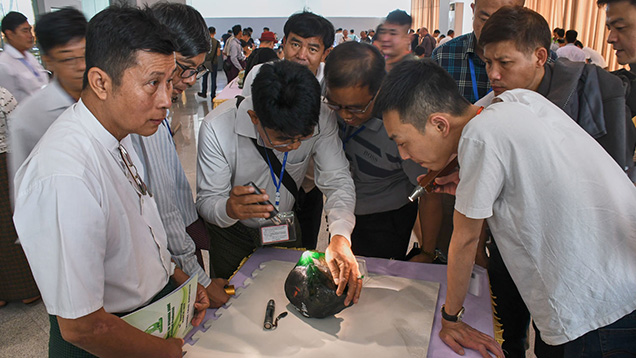
Introduction
Since 1964, thousands of merchants have repeatedly attended the Myanma Gems Emporium to source premium gemstones produced from the legendary source of Myanmar (formerly Burma). Here the buyers compete in silent auctions arranged for each gem category. These include jadeite, pearls and colored gemstones. The emporium is under the management of the Ministry of Natural Resources and Environmental Conservation. Very few people have had the opportunity to observe this event other than the participants, organizers, and media. A team from GIA research and education was recently granted the opportunity to document the emporium for the first time in the Institute’s history. The 56th Myanma Gems Emporium was held in the country’s new capital city, Nay Pyi Taw, March 11–20, 2019. The team spent four full days at the beginning of this 10-day event witnessing the bustling activity that few outsiders get to experience.
Competing for the Top Green at the Jadeite Auction
Many people in the trade call the Myanma Gems Emporium the “Jade Auction” since jade—specifically jadeite—is the absolute star here. Out of the total of 7,747 gem lots offered, 6,973 consisted of jadeite, the majority being pieces of rough. A very limited amount of finished jadeite products was on offer as well. As the sole economically important source of jadeite, the emporium is the only official venue for buyers to source this material. It is well known that China bears a long history of jade appreciation and is the largest consumer market for jadeite. Nearly 3,000 Chinese buyers attended this year’s Emporium, together with about 1,500 local merchants, to compete for the top green.
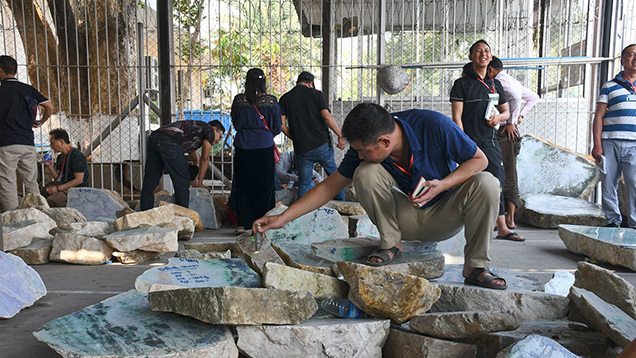
Chinese buyers are mainly from Guangdong Province, the hub of jade manufacturing and trading. They come to the emporium in teams to share the workload. With the skyrocketing price of rough, they can also split the cost and the risk involved.
While it is a trading platform, the emporium also provides a panorama of the ever-changing color, texture, transparency and pattern of jadeite. It is true that no two pieces of jade look the same. Myanmar has both primary and secondary jadeite deposits, though mining mainly happens on secondary deposits. All the lots at the emporium are from secondary deposits.
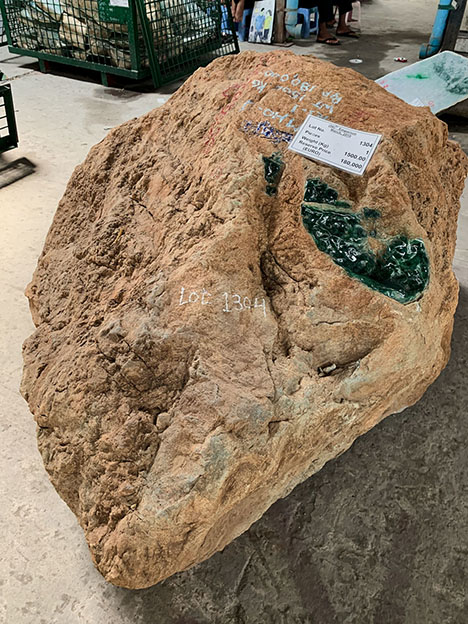
A jadeite boulder’s anatomy includes two major components: skin and the underlying jadeite. The appearance of both can vary considerably depending on the fluid activity during the formation, the completeness of metamorphism, the degree of weathering, the growth environment, and other factors. Although boulders from the same deposit or location show some similarity, no reliable prediction can be made on the internal quality. Most striking is the immense contrast in the large rough pieces, while the finished pieces seen on the market, especially in fine jewelry, often show quite even color distribution and texture.
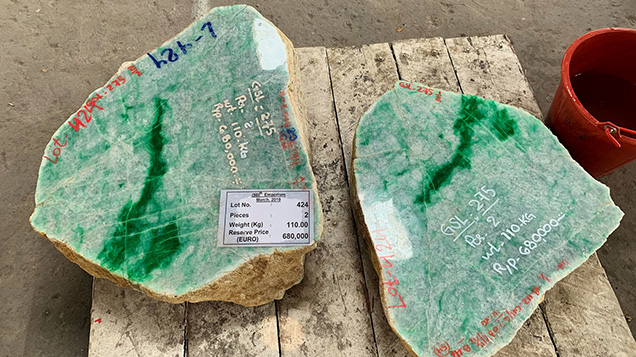
Even though the top green color, often called “imperial green,” is extremely rare, different shades (tones and saturations) of green still dominate the auction, most being of low saturation. Lavender and reddish hues are much rarer. Medium- to low-quality lavender rough lots are not that uncommon, and the color is often mixed with green areas in a single piece. Reddish and orange bodycolors are very hard to find. The authors saw some boulders with reddish fine-textured skin, which can potentially make cabochons and small pendants. Top-quality colorless (sometime referred to as “ice jade”) rough is also very rare at the emporium, which might explain the high price on this type of material in the consumer market.
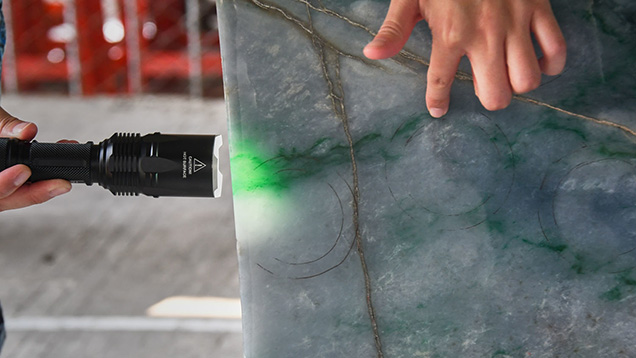
The most challenging and mysterious but exciting part of jadeite rough purchasing is quality evaluation. Becoming an expert buyer usually requires decades of experience. There is no shortcut to excel at this task, and “tuition” needs to be paid before mastering the job.
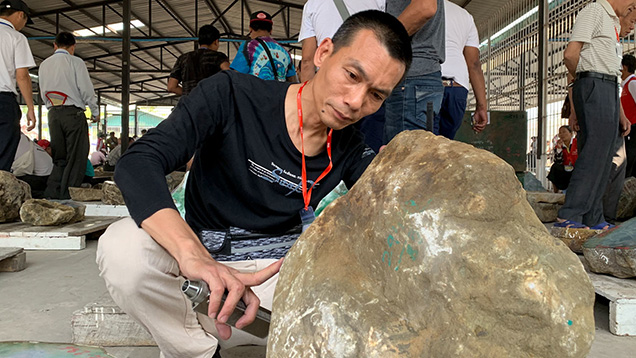
A general principle in the jadeite business is that the more you see, the more you pay. Some people choose to buy gambling stones with no show points or windows at all. Though they might pay less for the rough, the risk involved is overwhelmingly high. In the jade trade, there is a famous saying: nine out of ten gamblers go broke. Therefore, the vast majority of jadeite rough buyers go with a stone that has some exposure to indicate its internal quality.
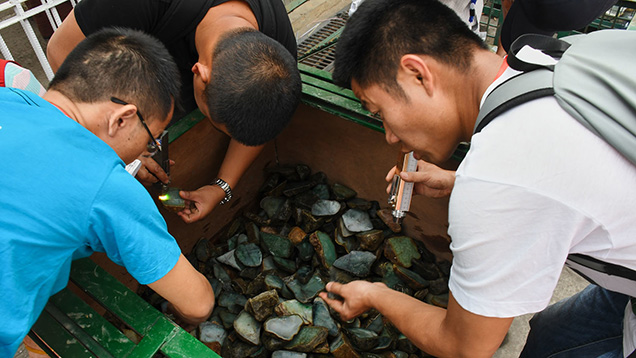
Jadeite buyers at the emporium are well equipped with some hand-held tools. A strong flashlight, a spray bottle, a plastic bangle template, and an erasable marker are the necessities. A dual-intensity flashlight allows buyers to view the rough both indoors and outdoors. The spray bottle helps to wet the surface so color and texture can be better revealed. The bangle template is used to locate areas of the rough where bangles can be cut. Since bangles command the highest price in the trade, they are always the first thing rough buyers are looking to make. The erasable marker is used to mark on the rough any potential finished products such as bangles, beads, and pendants.
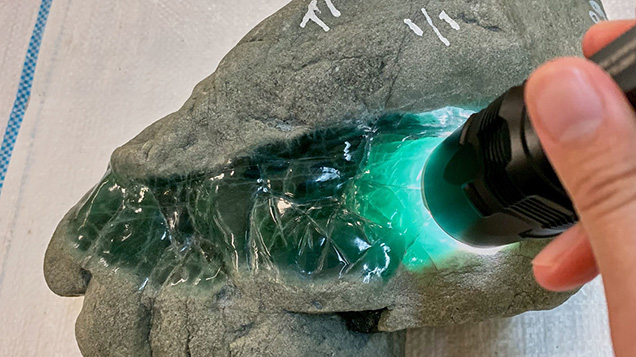
The factors buyers care most about are the color, texture, and transparency of the rough. After these three value factors, they also pay attention to how much of the material can be used to make profitable jewelry. In terms of color, even though the hue is obvious, the tricky part is that the finished product can show slightly different color appearance. This is partially due to uneven distribution of color and partially due to the path length of light—in other words, the distance light travels through the stone. Since most rough will be sliced into thinner slabs, the path length of the finished pieces is quite different compared to the rough. Experienced buyers tend to estimate the color appearance of finished products more accurately than people with very limited experience.
There is an unwritten rule in the jade trade that buyers would rather buy a green vein than a big patch of green on the surface. This is especially useful for buyers with little experience. When the green color distributes linearly as a vein and the seller slices the boulder open along the vein, the surface is full of green color but the depth of the green color is very hard to determine. If buyers can see the vein, it shows more potential since the vein clearly penetrates into the stone. There is still no 100% guarantee, since the vein could possibly thin out. This uncertainty is also the charm of jadeite rough purchasing and even the entire jadeite business.
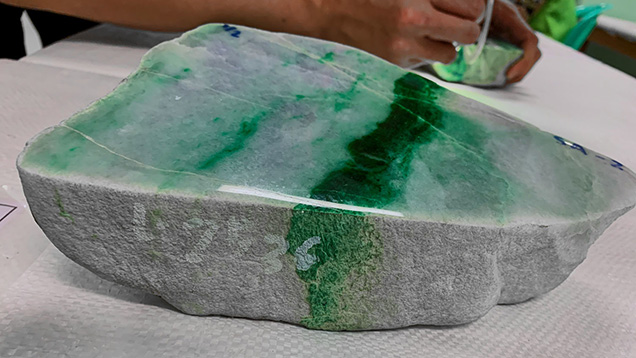
Buyers rely heavily on the flashlight to determine transparency and texture. The two value factors are often considered together as “water” in the jade trade. Depending on the halo and the depth of the light, buyers get a good idea of whether the rough’s “water” is high or low. After that, the quality is evaluated. Buyers also use the ruler along one side of the flashlight to measure the rough and then decide how much rough is useful and how many finished pieces can be produced. Sellers usually label fractures that have apparent durability concerns. However, it is unavoidable to see some fractures hidden inside the stone. This factor needs to be considered before determining the bidding price.
Jadeite buying at the emporium is a laborious journey for every buyer. The first four days are reserved solely for viewing, while pearls and colored stones are both viewed and auctioned at the same time. Starting from the fifth day, bidding and the results revealed are in process together with more viewing activities. From day 5 through day 10, prices for all lots (6,973 in this case) are released gradually.
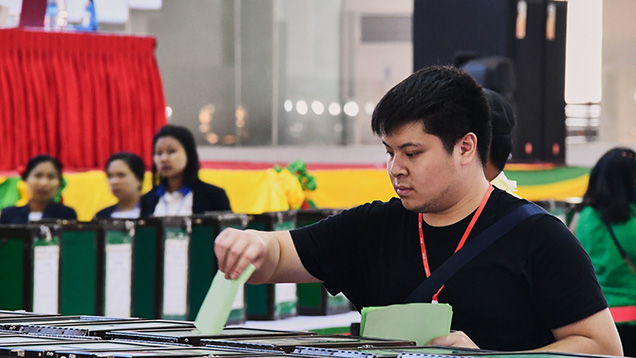
Almost all the jade lots are spread out in dozens of metal roof sheds outside the air-conditioned main hall. There are a few extra showrooms in the main hall. In March, the average outdoor temperature here is around 40 degrees Celsius (104 degrees Fahrenheit). This makes the buying process hot and dehydrating. In these conditions, buyers need water as much as the jade!
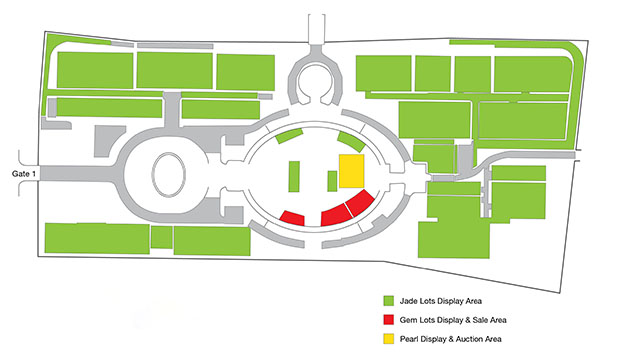
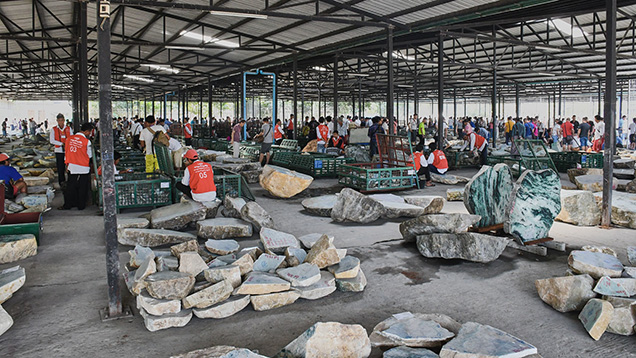
The lots are presented in many different forms, including single boulders, multiple boulders, sawn slabs, small pieces ready for carving, and even bangle cores. The weight of a lot ranges from 40 g to over 5000 kg. Very limited amounts of finished goods are also offered as lots, including beads, bangles, teacups, and bowls. Complete beds were also on offer for those with more eccentric tastes.
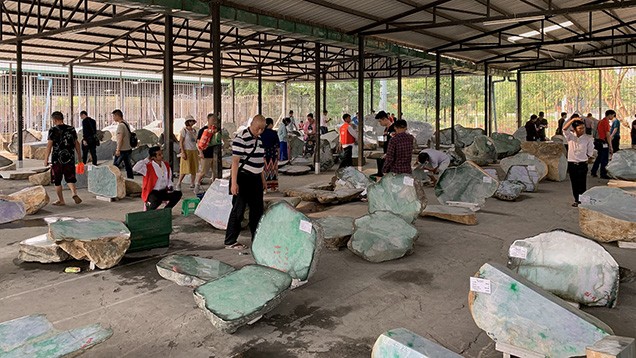
Buyers need to check all lots briefly to narrow down the targeted group. Then they spend time studying the targeted lots in detail. This includes extensive viewing, measuring, and calculating as a group to make final bidding decisions. Value factors mentioned previously are carefully evaluated one by one. Once the bidding price is determined, buyers will drop their bidding form in the corresponding bidding boxes and wait for the final price to be announced. Sometimes mistakes happen, and there are quite strict rules for the buyers to follow.
This year’s jadeite auction turned out some staggering numbers and outperformed the June 2018 emporium. For the past five years or so, the number of jade lots offered at the emporium has been declining from around 20,000 lots to around 7,000 lots this year. This shortage of supply is caused by the quick exhaustion of many deposits over the past two decades and the stricter regulations recently emplaced in the mining sector. This time, nearly 80% of the jade lots fell into the low-quality category, while less than 5% were considered fine quality.
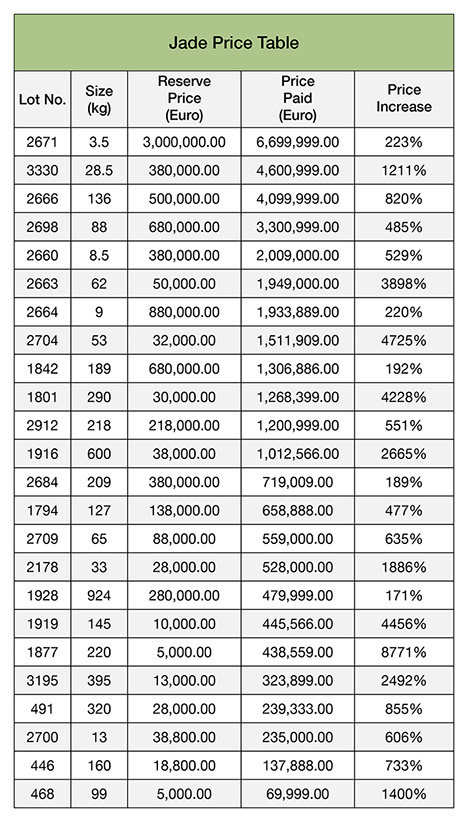
Going back 10 to 15 years, the Chinese domestic jadeite market experienced very fast growth. Jadeite jewelry prices kept going up until about 2015. During the past five years, linear price jump has stopped. The market is relatively stable but with some ups and downs. However, different market sectors changed differently. The slowdown and price dip mainly affected the middle to high market sector, while the low to middle sector in fact expanded with good sales numbers. At the same time, the low-quality and top-quality market stayed about the same.
On the other side, jadeite rough prices also experienced skyrocketing growth during the same time period. Now the rough price is at a pretty high point. Many buyers are more cautious, but when the quality is great, big capital is still spent on the rough. This is well reflected by the results here at the emporium.
Out of the 6,948 jade lots, 5,263 were sold for 474.1 million euros ($539 million). This represents a turnover rate over 75%. Buyers also felt that the quality of jade lots was better than the previous year. The king of the all jade lots was lot number 4996, with a final price tag of 10.59 million euros. Second place went to lot 5219, with a final price of 9.11 million euros. There were more than a dozen jade lots that sold for over 1 million euros. With the high prices of jadeite rough, it is unlikely that finished jadeite jewelry prices will drop in the very near future.
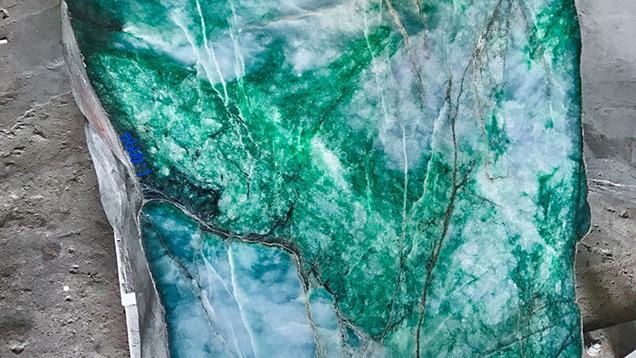
The Pearl Rising Star: Burmese Pearl Auction
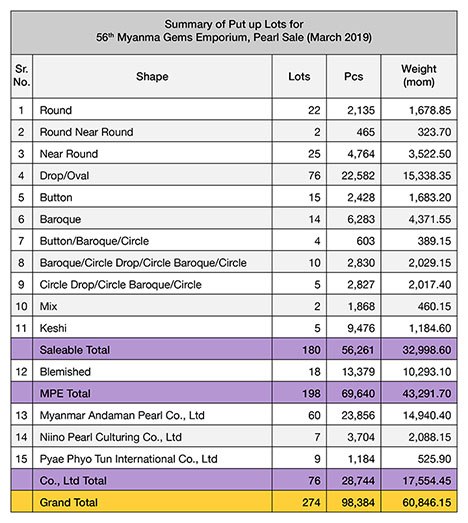
Burmese pearls are farmed in the waters around the islands of the Myeik (Mergui) archipelago. One state-owned farm and eleven local and foreign joint venture companies operate pearl farms, some with hatcheries, between Mali Island in northern Myeik and St. Luke’s Island in southern Myeik. Pinctada maxima oysters are raised there, and when they reached adulthood, shell bead nuclei are implanted to grow bead-cultured pearls. Non-bead cultured pearls (keshi) sometimes form as a byproduct, and these are popular within the trade. The usual sizes for the bead cultured pearls range from 11 mm to 19 mm, and the colors obtained are in the white to golden range including cream, silver, and other colors.
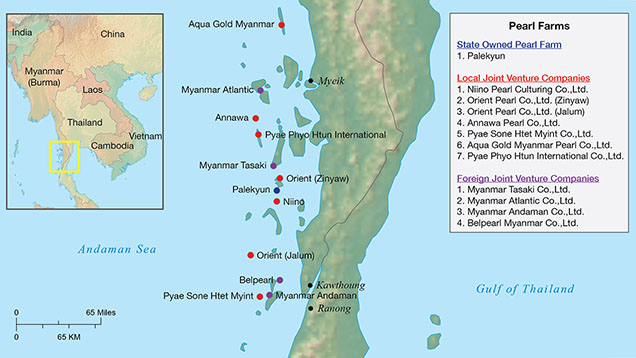
All pearls are examined and graded by staff of the Myanmar Pearl Enterprise (MPE). The main factors evaluated are size, shape, color, luster and nacre quality. The highest-grade lots comprise color-matched, round, pure golden pearls, while other lots consist of lower-quality goods that are not so carefully matched.
A significant number of pearl buyers were women, many of whom were Chinese. The other two main nationalities present were local buyers and Indians. They inspected the pearls in daylight or under daylight-equivalent desk lights and paid close attention to the matching of the pearls on all quality factors with an eye on finished products. However, some of the lots were intentionally of low quality and mixed sizes, and the GIA team soon learned that the buyers bid on such lots with the intention of processing them via peeling and polishing to dramatically improve their appearance.
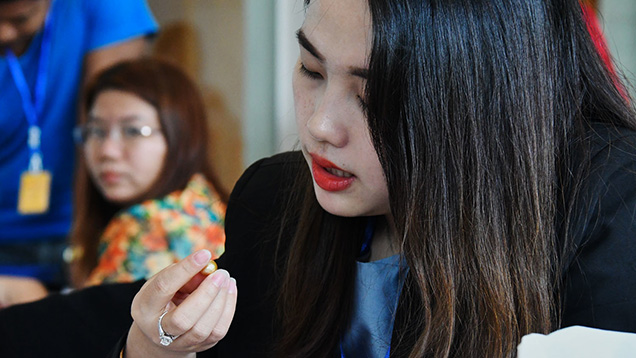
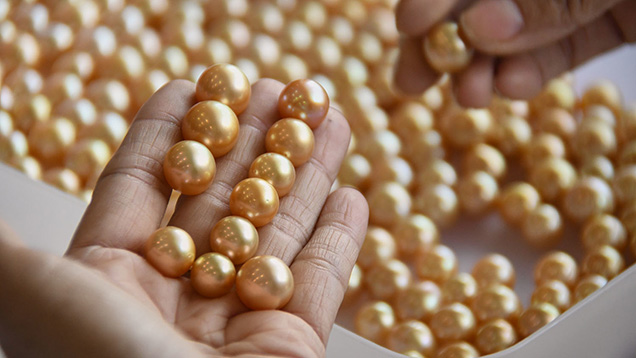
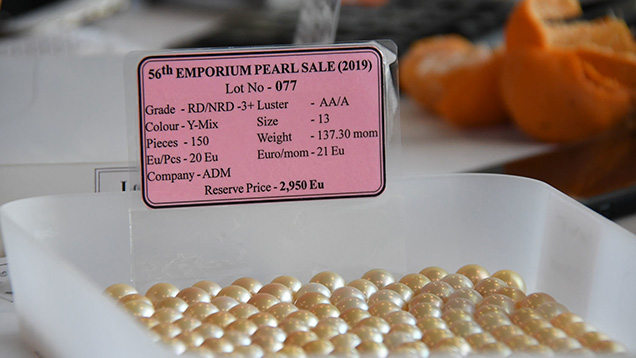
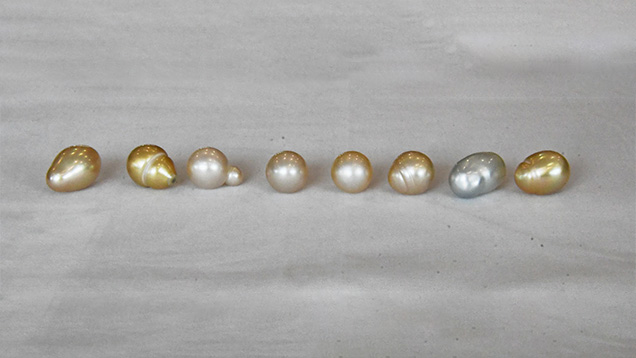
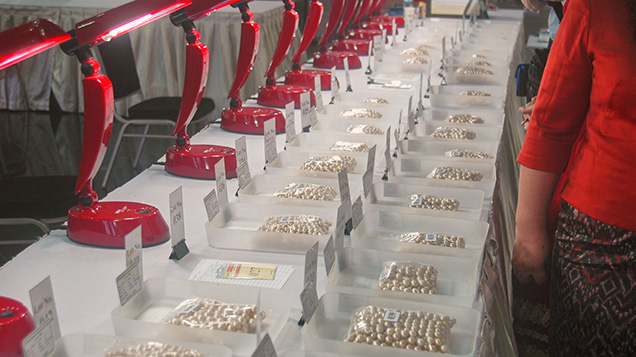
Prior to the emporium’s opening ceremony, GIA’s Nicholas Sturman and Joyce Wing Yan Ho gave presentations to MPE officials and staff in the gem museum within the confines of the emporium venue. The GIA presentations, organized by Tin Chaw in conjunction with the MPE, covered the farming of cultured pearls in Myeik and other locations around the world as well as the identification and classification of pearls using GIA protocols. The GIA team in turn was treated to a presentation by an MPE representative on the pearl production process, which included very useful information on the procedures and operations used by the pearling companies in Myeik.
Colors from the Legendary Source: Burmese Colored Stones Auction
In addition to jade, Myanmar has deposits of almost every other colored stone.
Rubies are the most coveted of colored gemstones, and Burmese rubies are held in especially high esteem. There are three areas that produce rubies in Myanmar: Mogok, Mong Hsu, and Namya (Nanyazeik). Mogok rubies are rarely treated, while Mong Hsu material requires treatment with flux to optimize its appearance. During the auction, the majority of ruby lots are untreated, but some are treated and even cut. The best rubies presented at auction were two untreated rough rubies from Namya (Nanyazeik) with a good shape, color and fluorescence.
Sapphires from Mogok were also available, often as cut stones. Colors included blue and purple to more pastel colors and yellows.
Large volumes of peridot crystals from the Pyaung-Gaung mine in northern Mogok as well as a few lots of amber from the northern Kachin Province were offered for sale.
Most of the buyers of rough colored stones at the emporium are Burmese people, based out of Mogok and Yangon. Thai and Chinese buyers also have an interest in certain goods. Thai dealers look for untreated Mong Hsu rubies, while Chinese customers are more interested in finished products (i.e., cut stones). Stones are checked in front of wide windows with ample daylight to judge color but are also inspected with flashlights and loupes to reveal internal flaws.
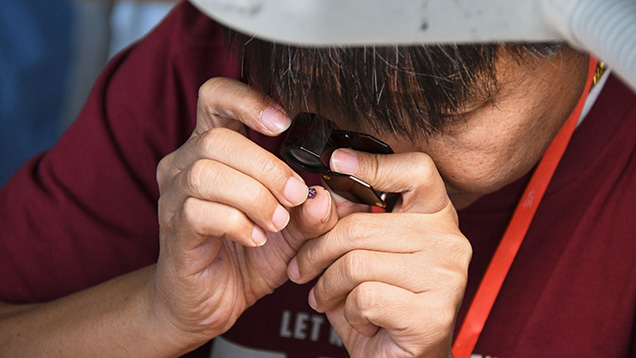
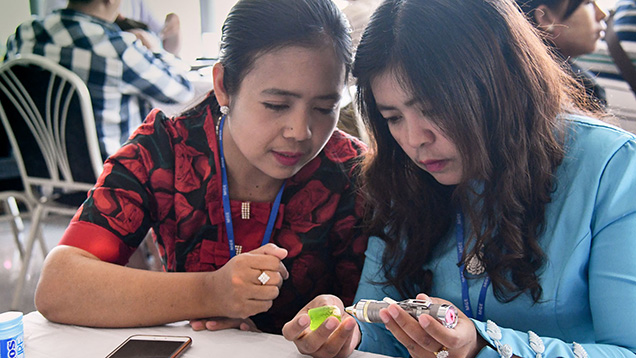
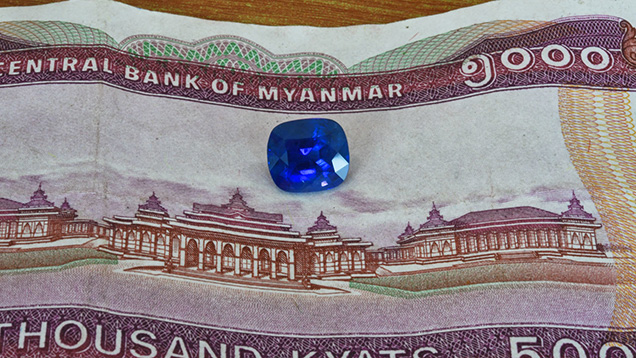
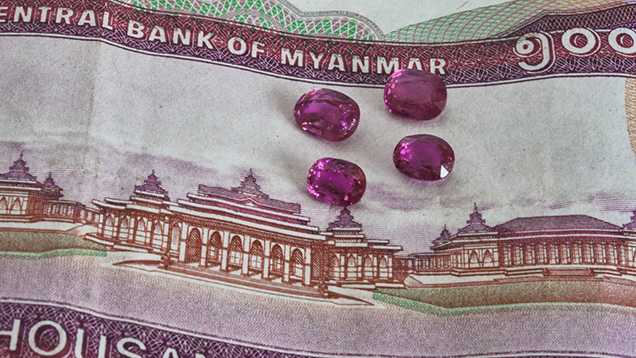
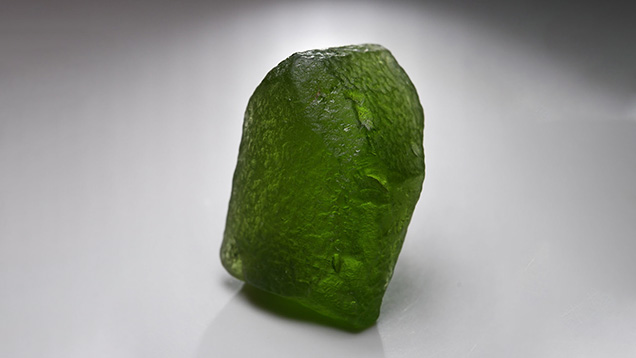
In March 2019, the Burmese government implemented mining legislation that installed a new license issuing system. In the three years before that (since late 2016), no new licenses were issued, which has seriously impacted colored stone production. This is especially the case for ruby mines, most of which have been closed for months if not years. This decrease in production in the main colored stone mining areas was clearly visible at the auction, where the volume and quality of rubies, sapphires, and other gems was significantly lower than previous editions.
Tao Hsu is director of global professional development and a technical editor of Gems & Gemology, Wim Vertriest is supervisor of field gemology. Tin Chaw is identification services representative, and Nicholas Sturman is senior manager of global pearl services, at GIA in Bangkok. Shane McClure is global director of colored stone services. Joyce Wing Yan Ho is a senior staff gemologist specializing in pearls at GIA in New York, and Kevin Schumacher is photo and video producer for Gems & Gemology, at GIA in Carlsbad, California.



